Community resources
Community resources
Community resources
An Overview of Jira Asset Management Tool
Asset management is crucial for businesses, especially for IT departments handling a range of hardware, software, and other valuable resources. A tool like Jira becomes even more powerful when paired with AssetIT, a Jira asset management tool that allows businesses to track, manage, and optimize their assets. This article explores the various aspects of Jira asset management using AssetIT, a robust solution to streamline asset tracking and improve overall IT asset management.
Introduction to the Jira Asset Management Tool
Jira Asset Management refers to the use of Jira—a project and issue tracking software by Atlassian—to manage and track organizational assets, such as hardware, software licenses, IT infrastructure, and other valuable resources. Using Jira for asset management involves leveraging plugins like AssetIT, which expand Jira’s capabilities to include real-time asset tracking, inventory management, and asset lifecycle management. With Jira asset management tool, organizations can ensure that all assets are properly accounted for, maintained, and optimized for efficiency, helping to reduce costs and improve productivity across IT and other departments.
What is Jira?
Jira, by Atlassian, is a widely used project management and issue-tracking software that aids teams in managing tasks, tracking progress, and facilitating collaboration. Traditionally popular among software development teams, it has evolved into a versatile tool for various workflows, including asset management.
Introduction to Asset Management in Jira
Asset management in Jira involves using the platform to maintain a comprehensive overview of all organizational assets. This can include hardware, software licenses, consumables, and more. A robust Jira asset management solution helps businesses monitor asset usage, track asset lifecycles, and ensure optimal allocation and maintenance. This is where AssetIT steps in.
Overview of AssetIT: Jira Asset Management Tool
AssetIT is a specialized plugin designed to expand Jira's functionality into full-fledged asset management. With AssetIT, businesses can leverage Jira’s capabilities for detailed asset tracking, integration with the service portal, and automated workflows, making asset management more efficient and seamless.
Key Features of Jira Asset Management Tool
Asset Tracking
The core of any asset management tool is tracking. AssetIT offers real-time tracking of all assets, enabling organizations to maintain up-to-date records of asset locations, statuses, and assignments.
![]()
Workflow Management
AssetIT leverages Jira’s powerful workflow management capabilities, enabling teams to set up custom workflows that align with their asset management needs. Whether they are serving internal or external purposes, this helps streamline processes like asset procurement, deployment, and retirement.
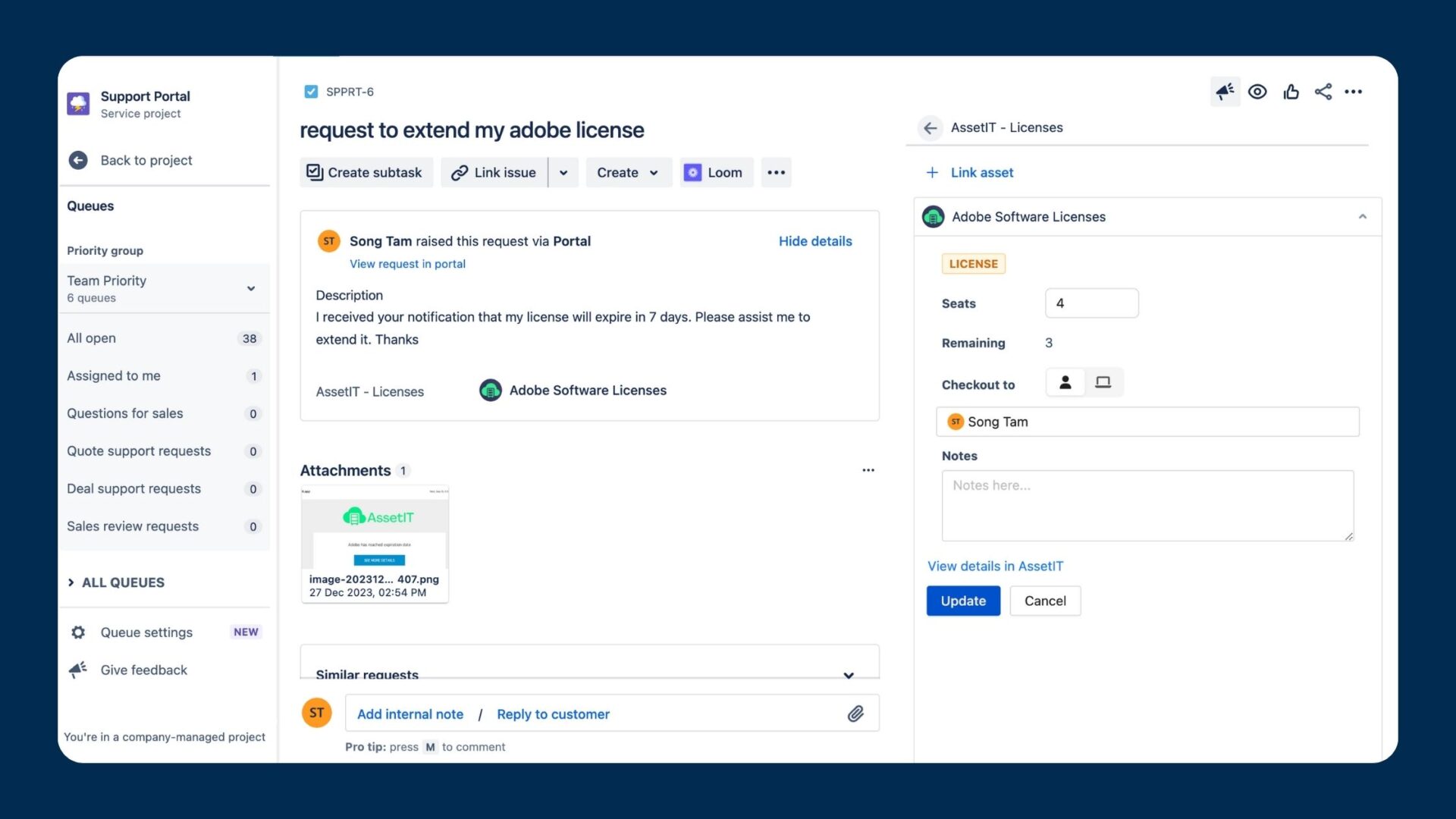
In the upcoming version, AssetIT will utilize the automation workflow, specifically the Jira issue transitioned triggers. This will allow users to align asset status with the issue status, streamlining the asset management process.
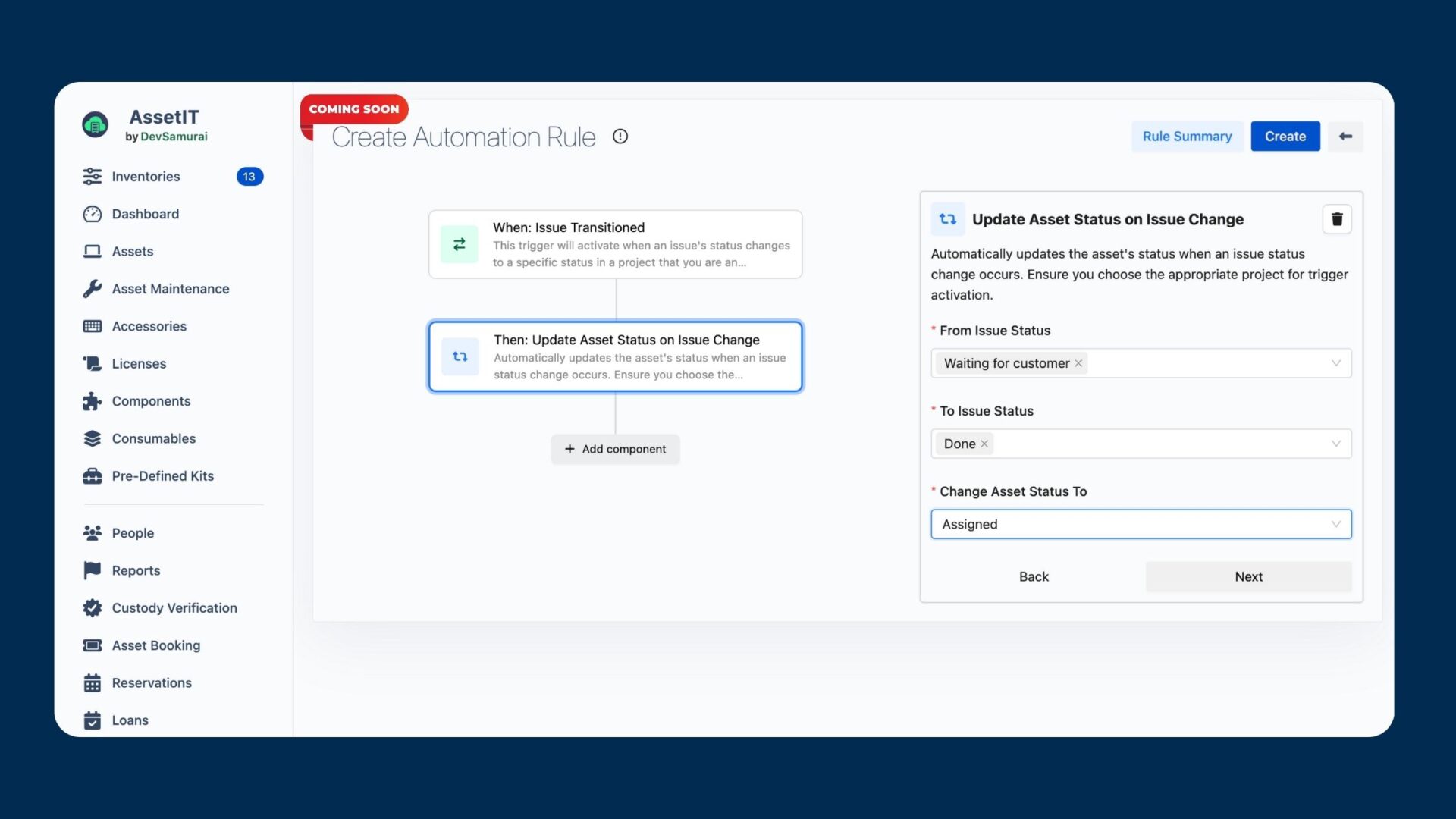
QR Code Support
With support for QR code generation, AssetIT simplifies the process of asset tagging and retrieval, making it easy to locate and manage assets. The QR code information is customizable, which effectively delivers the needed information for each asset.

Scheme-Based Access Control
AssetIT offers scheme-based access control, allowing organizations to manage permissions and ensure that only authorized users have access to certain assets.
To learn more about Permission in AssetIT, visit: Keep your IT Assets Safe and Sound with Permission Schemes | Asset Management Jira
Asset Lifecycle Management
AssetIT supports comprehensive lifecycle management, enabling organizations to monitor assets from acquisition through disposal while maintaining detailed records at each stage.
Inventory Management
AssetIT includes comprehensive inventory management, allowing organizations to track inventory levels.
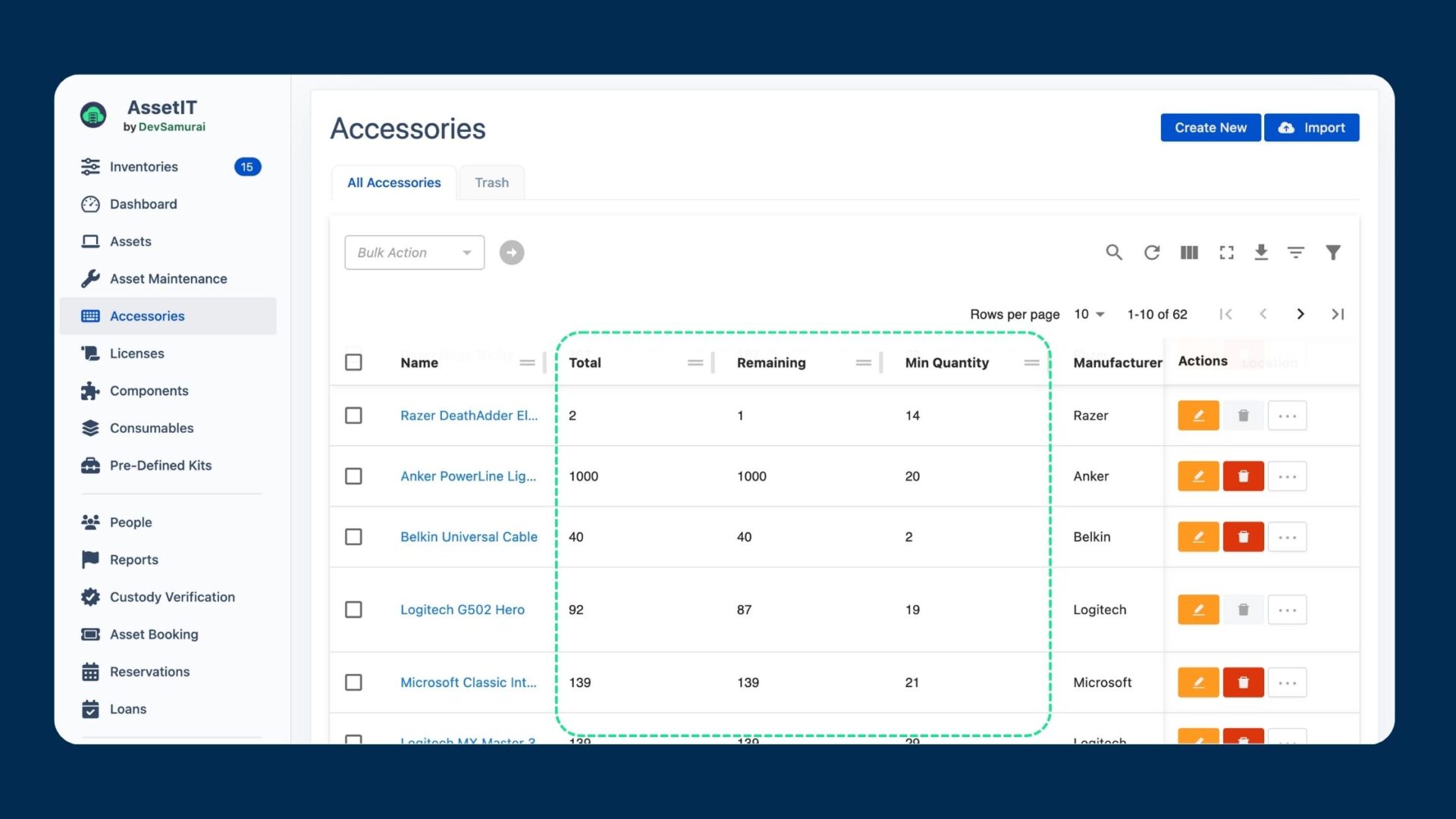
What’s more, the inventory management feature helps organizations manage their inventory from branch to branch, campus to campus within one centralized environment.
Reporting and Analytics Capabilities
AssetIT provides built-in reporting and analytics tools to help teams visualize data, track asset performance, monitor activity logs, and generate custom reports for better decision-making.
Benefits of Using Jira for Asset Management
Enhanced Productivity
By centralizing asset data within Jira, teams can eliminate redundancies and streamline processes, leading to enhanced productivity and improved workflow efficiency.
Centralized Asset Database
With all asset information stored in one place, organizations benefit from a centralized asset database that simplifies tracking and management across departments and teams.
Improved Collaboration
Jira’s collaboration features are enhanced by AssetIT, enabling teams to work together more effectively on asset-related tasks, incident responses, and maintenance.
Reduced IT Costs
Efficient asset management can reduce unnecessary spending on new assets by optimizing the use of existing ones and avoiding mismanagement or loss.
How Jira Asset Management Tool Works
Setting Up AssetIT in Jira
Getting started with AssetIT is straightforward. Users can install the plugin directly from the Atlassian Marketplace and configure asset categories and custom fields based on their organization’s needs.
- Go to the Atlassian Marketplace: Open your browser and navigate to the Atlassian Marketplace.
- Search for “AssetIT”: In the search bar, type “AssetIT” and hit enter. Alternatively, you can access this link.

- Click 'Try it free': On the AssetIT page, click the 'Try it free' button. This will initiate the installation process.
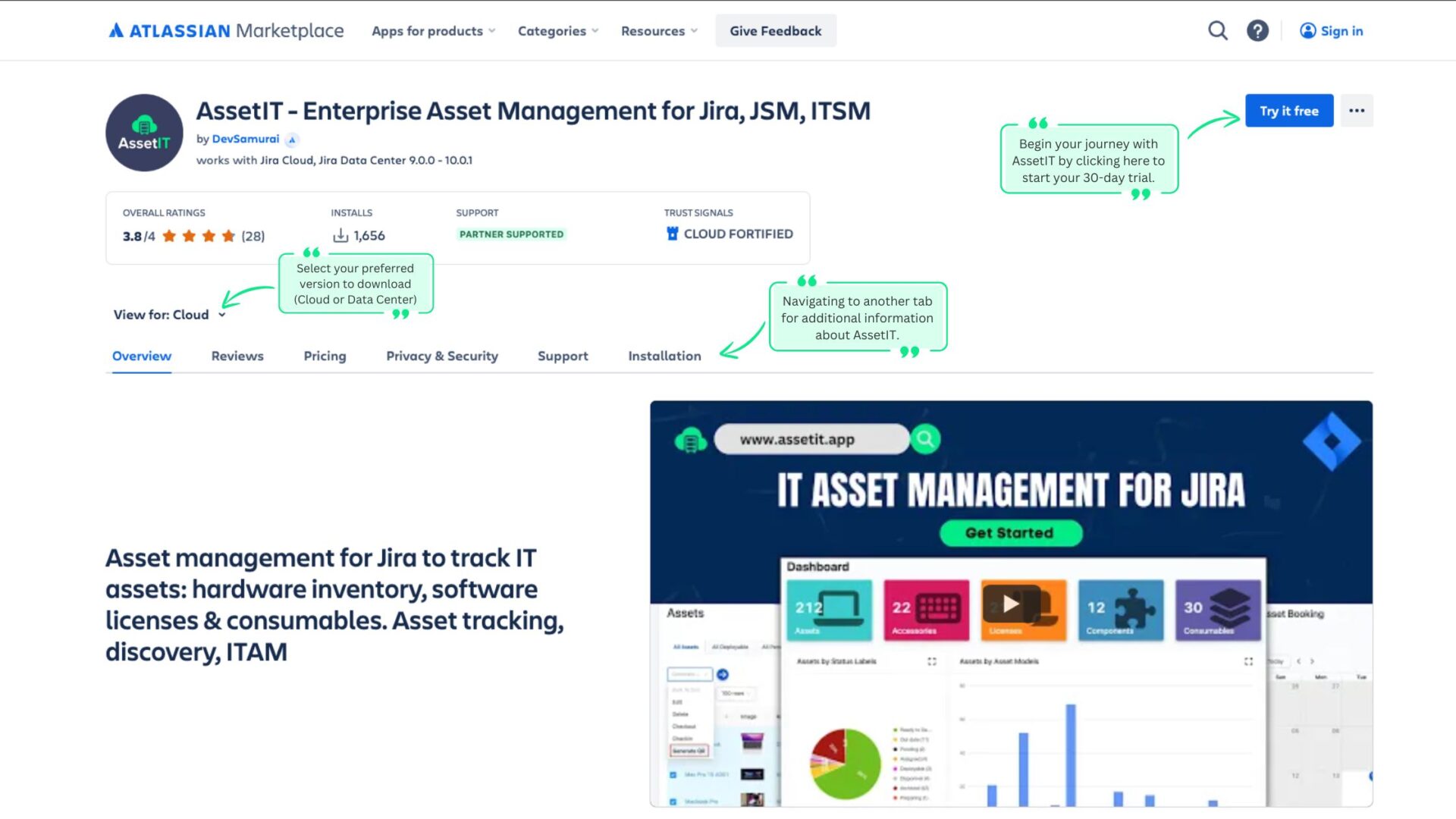
- Choose Your Jira Site: A dialog box will prompt you to select your Jira cloud site. Choose the appropriate site from the list and click 'Install.'
- Confirm Installation: Follow the on-screen instructions to complete the installation. You may need to grant AssetIT the necessary permissions to integrate with your Jira site.
- Start Using AssetIT: Once the installation is complete, you can access AssetIT from the Jira menu. Explore the app to start managing your assets directly within Jira.
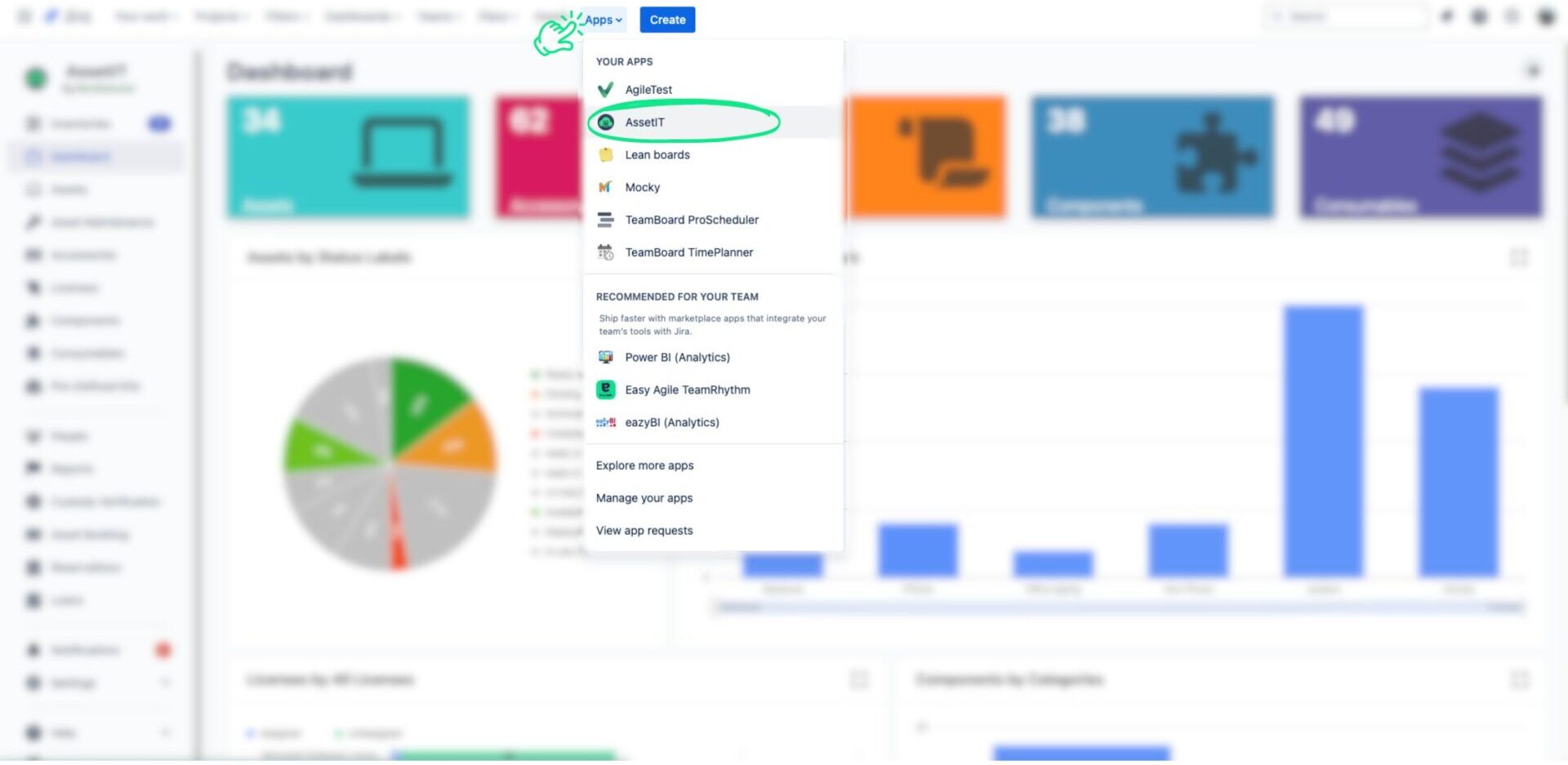
Defining Asset Models and Categories
AssetIT allows users to categorize assets by type, such as hardware, software, and IT infrastructure. This categorization makes it easier to search, filter, and manage assets within Jira.
Tracking Assets Through Their Lifecycle
From acquisition to disposal, AssetIT enables users to track every stage of an asset's lifecycle. This includes procurement, deployment, usage, maintenance, and eventual retirement.
Assigning Assets to Users and Teams
The tool allows for easy assignment of assets to individuals or departments, ensuring accountability and enabling better tracking of asset use within the organization.
Asset Management Best Practices with Jira
To maximize the benefits of Jira asset management, it's crucial to follow best practices. Regular audits, accurate records, and consistent data updates are essential for effective asset management. Implementing these practices ensures data accuracy, reduces asset loss, and improves decision-making.
Tracking Asset Lifecycle with Jira Asset Management Tool
AssetIT enables comprehensive lifecycle tracking, covering key stages such as acquisition, deployment, maintenance, and disposal. This functionality ensures that assets are managed efficiently throughout their lifecycle, with each stage tracked meticulously for better planning and resource allocation.
Reporting and Analytics in Jira Asset Management
With reporting and analytics tools, AssetIT enables organizations to monitor asset performance, forecast future needs, and track asset depreciation. These insights are invaluable for strategic planning and budgeting.
Choosing the Right Asset Management Tool in Jira
When selecting an asset management tool, it's essential to evaluate features, scalability, budget, and user requirements. AssetIT offers a comprehensive solution tailored to Jira users, making it an excellent choice for organizations seeking to enhance their asset management capabilities.
Frequently Asked Questions (FAQs) on Jira Asset Management Tool
What is Jira used for in asset management?
Jira helps track, manage, and optimize organizational assets by leveraging the AssetIT app, making it a powerful tool for asset management.
How does AssetIT enhance Jira’s capabilities?
AssetIT adds advanced asset management features to Jira, such as real-time tracking, barcode support, inventory management, automated status transition, and many more.
Can I integrate AssetIT with other tools?
Yes, AssetIT supports integrations with various Jira tools, including Jira Work Management, Jira Software, and Jira Service Management.
Is Jira Asset Management tool suitable for small businesses?
Yes, AssetIT is scalable and can be customized to meet the needs of businesses of all sizes.
What are the common challenges of asset management in Jira?
Challenges include managing asset data accuracy, tracking remote assets, and reducing asset misplacement, all of which AssetIT addresses effectively.
How does Jira help with asset lifecycle management?
Jira, with AssetIT, allows users to track assets through all stages of their lifecycle, from acquisition to disposal, improving accountability and planning.
Conclusion
AssetIT extends Jira's capabilities, offering a comprehensive solution for asset management. With its rich features and seamless integration with Jira, AssetIT is ideal for businesses seeking to streamline their asset-tracking processes.
Try AssetIT for free at: AssetIT - Asset Management for Jira.
Was this helpful?
Thanks!
Emily _ DevSamurai
About this author
Partnership Manager
DevSamurai
Tokyo, Japan
19 accepted answers

1 comment